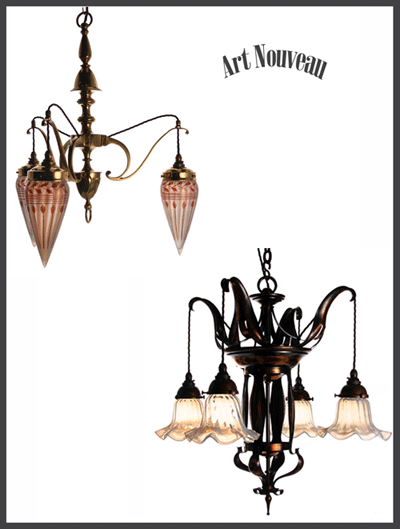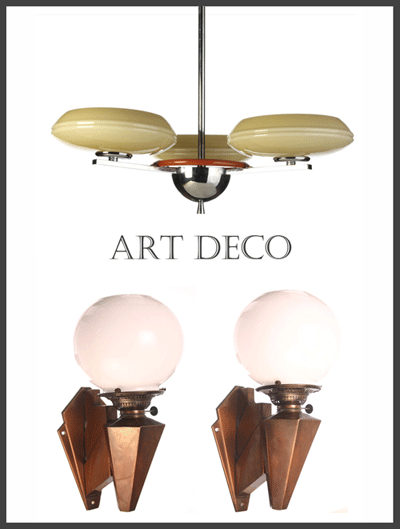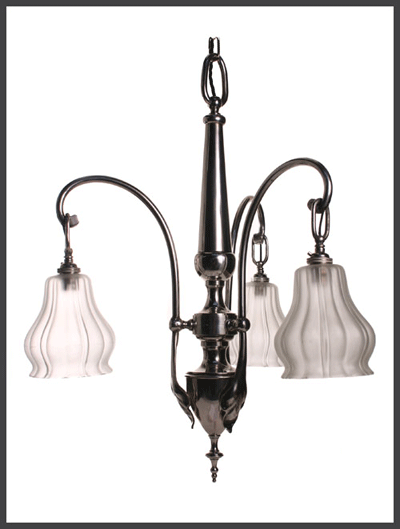Architectural lighting: Art Deco and Art Nouveau
We take a look at the similar influences, but very different implementations, of Art Deco and Art Nouveau

Art Deco and its forerunner, Art Nouveau, share their roots despite being, quite literally, geometrically opposed.

Art Nouveau was the height of fashion at the turn of the C20th, the ultimate fin de siècle style. It was decorative, flowery and organically inspired, but ran contrary to the conservative political climate in the run up to the First World War.
The designs were over-elaborate and too decadent to match the demand for a modern national style and so, taking influence from the more linear, geometric variant of Art Nouveau, Art Deco was born.
Folk art was an important influence for both Art Nouveau and Art Deco, but where it was embellished in Art Nouveau designs, it was streamlined, simplified and stylised to suit the fashion of the Art Deco period.
Art Nouveau design demanded integration and harmony, from the façade of a building, to the furniture and light fittings inside. This coupled with the emergence of the magical new source of lighting, electricity, led to an explosion of interest in lighting design.
The flower was the motif of the era and its dominance in lighting design was aided by electricity. The droop of the flex was widely used to represent the stem of the flower, topped with a flower-like shade and a stamen-shaped bulb.
The dramatic and beautiful designs of the Art Nouveau period remained the privilege of the rich, but this was soon to change.
Exquisite houses, the beauty of Nature, and how to get the most from your life, straight to your inbox.

Art Deco, like its forerunner Art Nouveau, was an eclectic style and drew on many sources. However its philosophy was based on purity of form, with Art Nouveau now being seen as a violation of the basis of design in that too much priority was placed on ornamentation, over function.
Out went the bronze finishes, flowers, insects and colours to be replaced by chrome, alabaster, and white or clear glass, etched or sandblasted to achieve sculptural effects. Designers were more likely to take their influence from an Aztec temple or the newly discovered riches of Tutankhamen's tomb, than the nature around them.
Despite its obvious roots in the Art Nouveau period, Art Deco designers turned their backs on their predecessors and embraced the latest technologies and plastics (especially Bakelite) which allowed lighting design to reach the masses.
Art Deco marked the birth of the science of lighting.
By now, electricity was widely available and the increased flexibility it offered meant light could be relayed to where it was needed. A fashion for reflecting light off of the ceiling to soften and diffuse it led to the birth of the uplighter, so often seen in Art Deco fixtures.
An industry sprung up around lighting, and architectural lighting became an important business. Magazines and articles were published and most leading architects would seek advice from lighting engineers and designers.
Art Nouveau may arguably be described as the stylistic forerunner to Art Deco, however, the Art Deco period marks far more than a style or an era in the history of lighting, it marks the birth of the lighting industry as we know it.

Figure 1 An Art Deco light fitting, with strong Art Nouveau influences
Karen Wallis-Smith, owns Fritz Fryer Antique Lighting who offer an extensive lighting sales, design and consultancy service, specialising in the high quality restoration of period fittings. They also work with private and commercial clients to create sympathetic lighting solutions for period properties and their on-site workshop repair all fittings, by hand, to the highest possible standard.

This is an article from ProjectBook which provides a wide range of information for the conservation, restoration, care and repair of period and listed buildings. Fritz Fryer Antique Lighting is a member of the Heritage Register which contains over 500 vetted craftsmen, contractors and consultants from all over the UK. Updated daily with new content, the website features the heritage register, a products directory, informative articles, current news, events and more. For more information, visit www.projectbook.co.uk.
Country Life is unlike any other magazine: the only glossy weekly on the newsstand and the only magazine that has been guest-edited by His Majesty The King not once, but twice. It is a celebration of modern rural life and all its diverse joys and pleasures — that was first published in Queen Victoria's Diamond Jubilee year. Our eclectic mixture of witty and informative content — from the most up-to-date property news and commentary and a coveted glimpse inside some of the UK's best houses and gardens, to gardening, the arts and interior design, written by experts in their field — still cannot be found in print or online, anywhere else.

